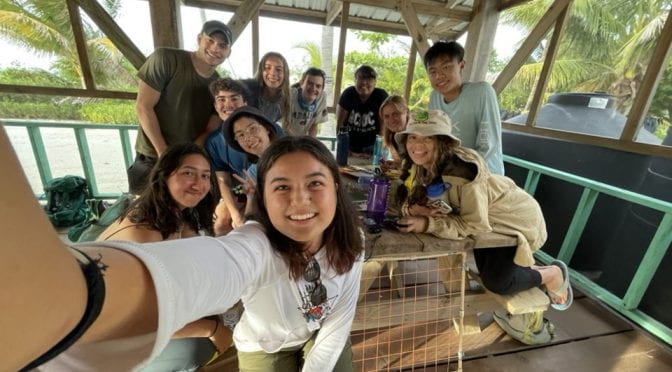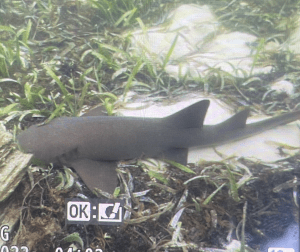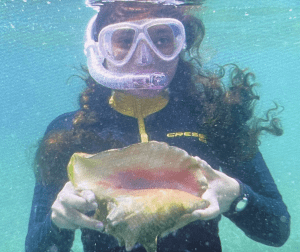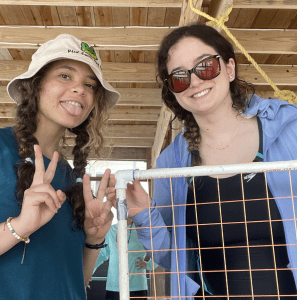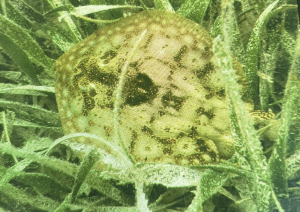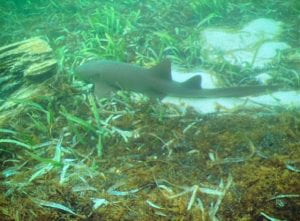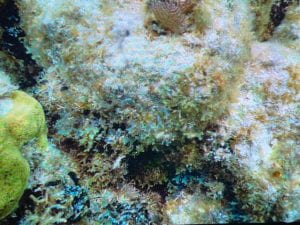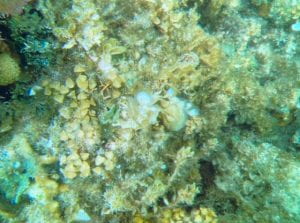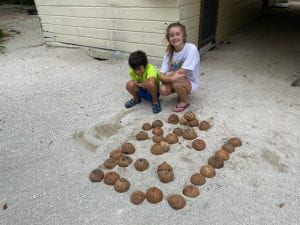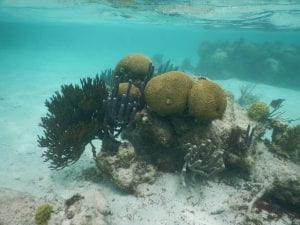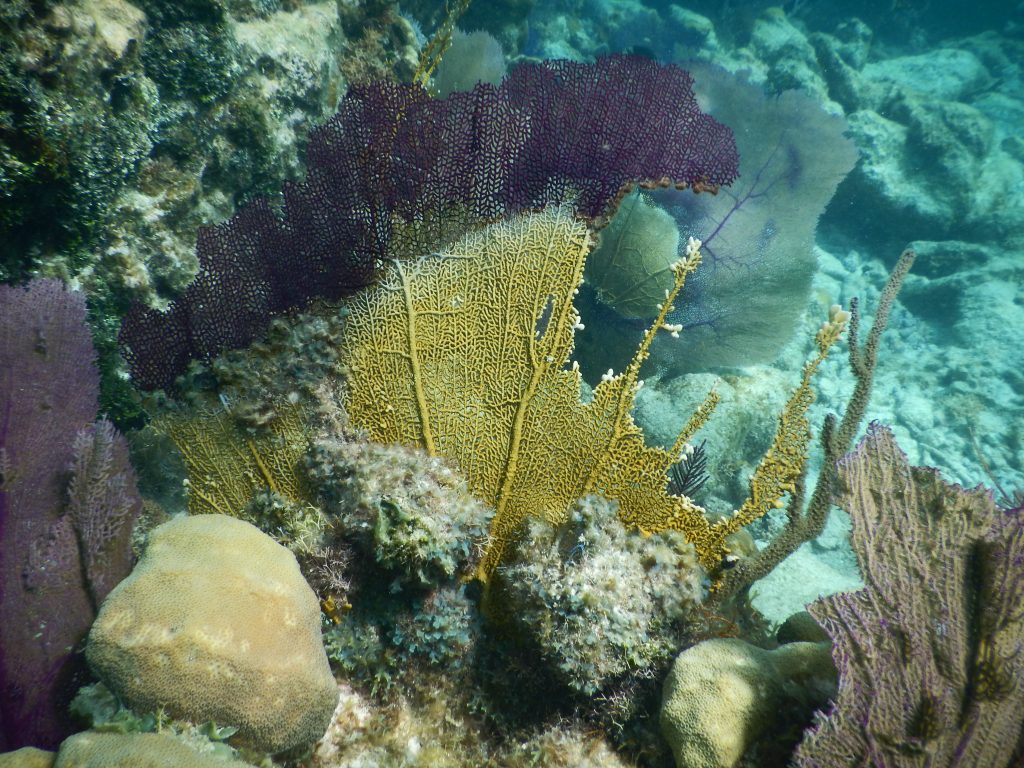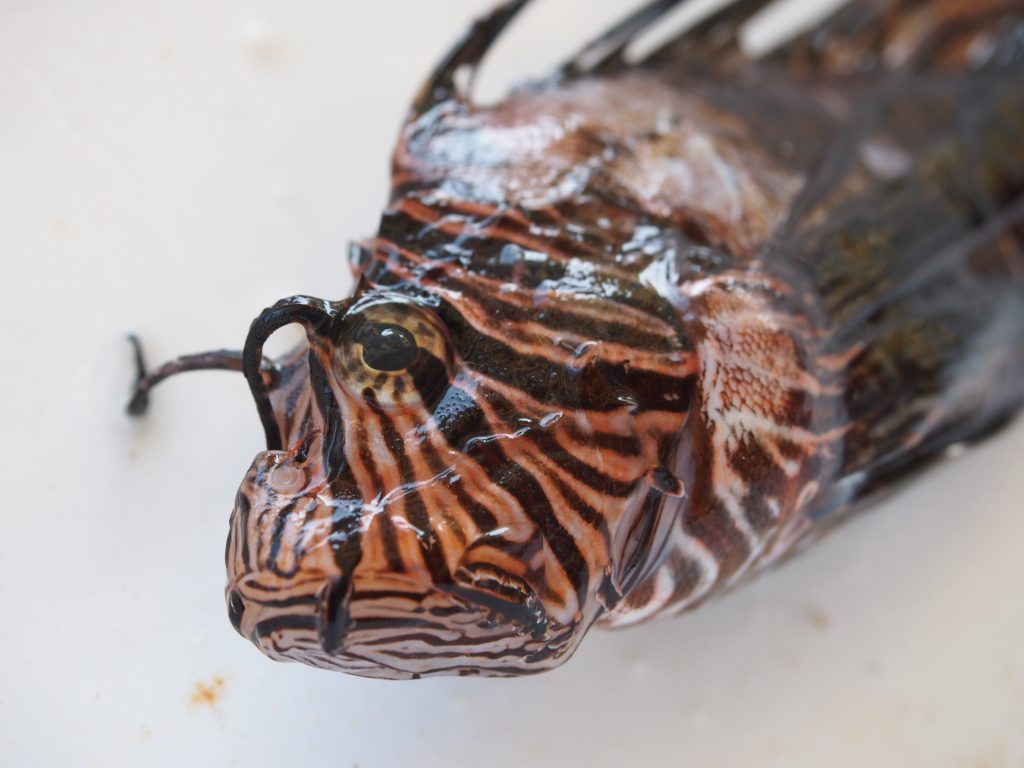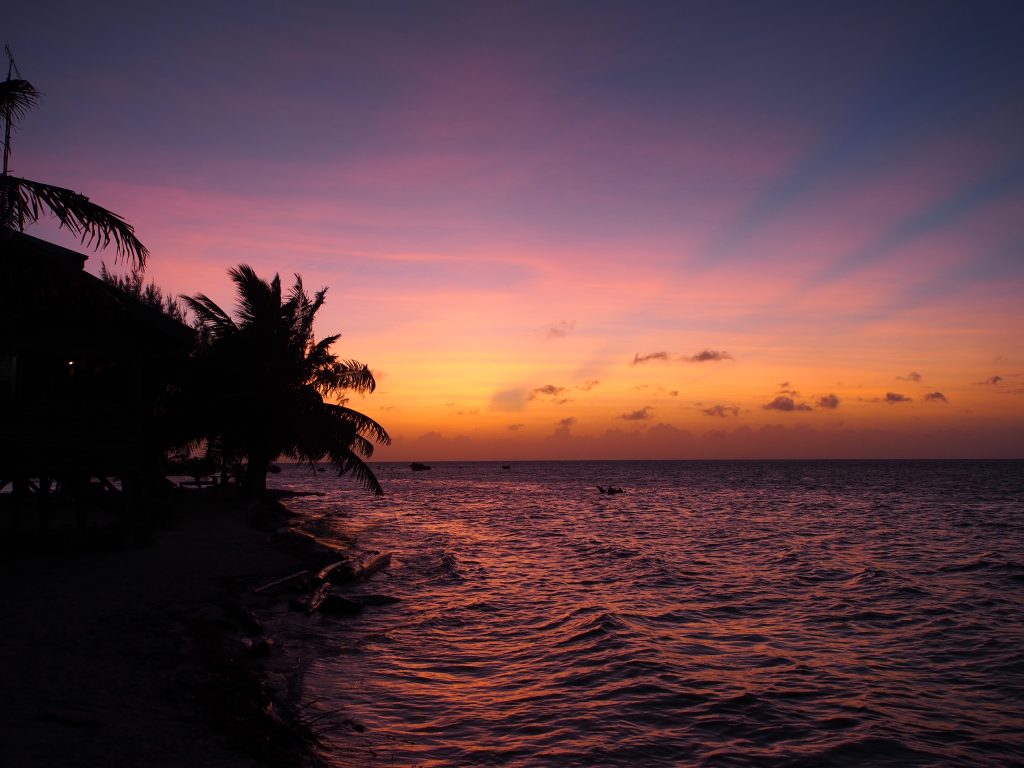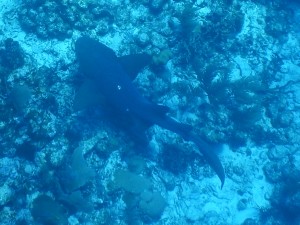Today was the last full day in Belize! If I had it my way, I would never leave Glover’s Reef. This place has been magical. This morning started with a trash cleanup project where we surveyed trash buildup as it had washed ashore from the ocean on various points of the island. We filled six large trash bags to the brim, and had we had more trash bags to store the trash in, we could’ve kept going.
This afternoon we dissected the invasive lionfish Dr. Solomon and Dr. Evans had been catching this week. Sam and my lionfish had 7 fish inside its stomach! Then we ate the lionfish as ceviche (yummmm).
Before dinner, I went for one last snorkel. I saw a nurse shark right off the dock, so naturally I jumped in the water and tried to find it. We went a ways into the water where I found another large nurse shark resting next to the reef. The shark was about 6 ft long and just sleeping on the sand. Right as I turned to leave the nurse shark and swim somewhere else, a southern stingray swam right underneath me! It was a medium sized stingray, but it got super close to me! What a great 15 mins for observing my taxon!
After snorkeling a while longer, I found a trumpetfish, a porcupine fish, a tiny pufferfish, and some grunts doing a face off. The rest of the evening was spent swimming off the dock, packing, doing final presentations, and socializing on the dock one last time.
I am sad to be leaving tomorrow but am glad that everyone will be on campus together again in August!
Claire C






